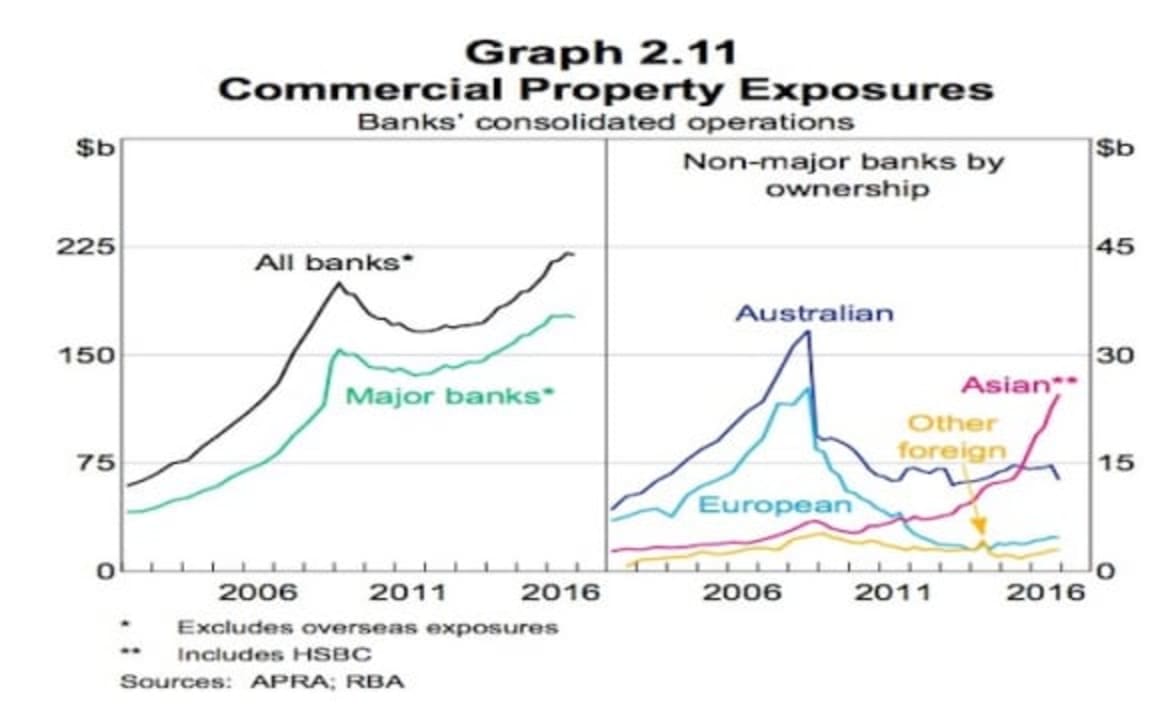Commercial prices continue to rise more than rents: RBA

Commercial property prices have continued to rise by more than rents, and yields have now reached historically low levels, according to RBA’s Financial Stability Review 2017.
Nonetheless, yields on Australian commercial property remain higher than in many overseas property markets and other asset classes, which has attracted investors, including foreign buyers, it noted.

The current heightened commercial property valuations may leave some leveraged investors vulnerable to subsequent price declines.
In particular, if global interest rates were to increase more quickly than investors currently anticipate or demand from foreign or domestic investors were to decline, a consequent price decline may lead leveraged property investors to breach loan-to-valuation covenants on bank debt.
They would then be required to inject additional equity to support their loan facilities, which may prompt further sales and price declines if they were unable to do so.
Like residential property markets, conditions in commercial property markets vary significantly by state and type of asset.
Investor demand is strongest in Sydney and Melbourne, and for office and industrial properties.
In Sydney and Melbourne, prices for office property are rising, and growth in rents has increased in recent months due to strong tenant demand.
In Brisbane, office prices are rising at a much slower rate, while prices in Perth are flat. Office vacancy rates are elevated in Brisbane and Perth (Graph 2.9).

There is some evidence that conditions in the prime-grade Brisbane and Perth office markets may be stabilising, though this appears to have come at the expense of secondary-grade markets where the outlook remains weak.
Falling rents and increasing vacancy rates have motivated tenants to relocate into better quality office spaces.
Accordingly, prime-grade tenant demand picked up in Brisbane over the past six months, while in Perth analysts generally expect the vacancy rate in prime-grade office property to stabilise, with little new supply forecast to come on line over the next couple of years.
Conditions in industrial and retail commercial property markets also vary by city. Stronger local economic conditions and infrastructure investment have supported tenant demand in the Sydney and Melbourne industrial markets, and rent growth has picked up noticeably in Sydney.
Conditions in Brisbane may be stabilising, while rents in Perth continue to fall.
In retail property markets, tenant demand has been soft nationally.
In 2016, APRA reviewed banks’ commercial property lending practices, including lending for residential development.
The review examined banks’ underwriting standards and portfolio controls.
Among other things, the review found evidence at some ADIs of weak underwriting standards and that the ability of lenders’ boards to monitor the risk profile of lending was hampered by inadequate information systems.
Over the past six months, banks have tightened their commercial property lending standards and growth in banks’ commercial property exposures has slowed, due primarily to slower growth in lending for residential and land development (Graph 2.10).

A decline in Australian banks’ commercial property exposures has been offset by an increase in Asian banks’ commercial property exposures (Graph 2.11).

Find the RBA's latest Financial Stability Review 2017 here.